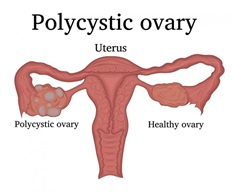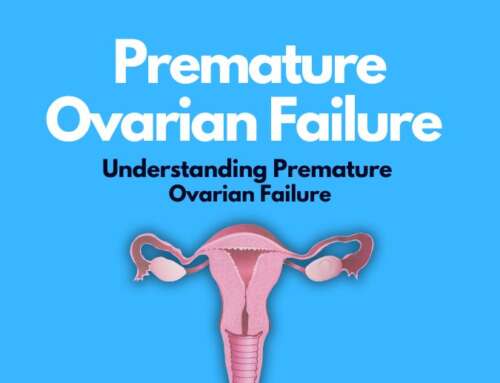
Ovarian Cysts
What is an ovarian cyst?
An ovarian cyst is a fluid-filled sac that forms within an ovary. The ovaries are a pair of small, oval-shaped organs in the lower part of a woman’s belly (pelvis). The ovaries are part of the female reproductive system which produce eggs and hormones. About once a month, one of the ovaries releases an egg and also produces estrogen and progesterone which are the key hormones that regulate the menstrual cycle.
Types of Cysts
There are different kinds of ovarian cysts. They can occur for various reasons, and they may or may not need treatment. A cyst can vary in size from below a centimeter and sometimes be even much larger, growing up to 10cm.
Ovarian cysts are very common in women of childbearing age, but uncommon in women after menopause. Young girls can also get them, but this is less common.
The most common type of ovarian cyst is known as a functional cyst and they form during the menstrual cycle. They are usually benign (not cancerous).
There are two types of functional cysts:
- Follicular cysts: In a normal menstrual cycle, an ovary releases an egg each month. The egg grows inside a tiny sac called a follicle. When the egg matures, the follicle breaks open to release the egg. Follicle cysts form when the follicle doesn’t break open to release the egg. This causes the follicle to continue growing into a cyst. Follicle cysts often have no symptoms and go away in one to three months.
- Corpus luteum cysts. Once the follicle breaks open and releases the egg, the empty follicle sac shrinks into a mass of cells called corpus luteum. Corpus luteum makes hormones to prepare the endometrium for possible pregnancy if the egg is fertilized. Corpus luteum cysts go away after a few weeks.
Other type of Ovarian Cyst is the Non functional Cyst. They can be benign or malignant. The benign ones may require treatment or resolve spontaneously. The other types of cysts include:
- Large Follicular Cysts: They are greater than 5-8cm. They can cause ovarian accidents (bleeding and twisting of the ovaries and therefore require treatment.
- Hemorrhagic Cysts: They are follicular or corpus luteum cysts with bleeding inside. They are very painful but they resolve spontaneously without needing any treatment.
- Endometriomas are caused by endometriosis within the ovary. Endometriosis happens when the lining of the uterus (endometrium) grows outside of the uterus. This lining bleeds every month, during menstruation and blood accumulates within the endometrioma causing it to progressively increase in size.
- Dermoids: They are benign cyst of cells that transform within the ovary into human tissues such as hair, fat, bone, skin etc. They also progressively increase in size and require treatment. They can cause pain but most times do not cause symptoms.
- Cystadenomas are filled with watery fluid and can sometimes grow large.
- Polycystic ovary syndrome: In some women(about 20%), the ovaries make many small cysts. This is called polycystic ovary. This can be associated with menstrual irregularities but most times do not cause any notable symptoms.
- Ovarian Cancer: Malignant (cancerous) cysts are rare. They are more common in older women after menopause. For this reason, ovarian cysts after menopause should be checked by your doctor. Most ovarian cysts are not cancerous.
What are the symptoms of an ovarian cyst?
Most ovarian cysts don’t cause symptoms. If a cyst does cause symptoms, it may cause sudden, severe pain. If a cyst causes twisting of an ovary, you may have pain.

How is an ovarian cyst diagnosed?
The doctor may feel a cyst during pelvic examination and often times decision for further investigations are made depending on clinical history and findings. The doctor may observe changes in the cyst while monitoring closely or order for investigations.
Ovarian cysts are common and often cause no symptoms and resolve without treatment. However, some cysts can become large, rupture, or cause twisting in the ovaries, resulting in pain and possibly bleeding. Some become cancerous over time.
The tests for diagnosis may include:
- This test uses sound waves to view the size, shape, and location of the cyst. The test can also show if the growth is solid or filled with fluid.
- This uses large magnets and a computer to create a detailed picture of the area.
- Blood tests(Tumor Markers). These check for hormone problems and cancer. They also check if the cyst is cancerous.
- This is a test where a tiny piece of the ovary is taken. The piece is examined in a lab for abnormal cells. This may be done if an ultrasound shows a certain type of growth on the ovary.
Treatment of Cysts
This will depend on the type of cyst:
- A Functional Cyst require no treatment
- Cysts like Endometriomas, Dermoids, Large Follicular Cysts would require surgical treatment.
- Cancerous cysts require expert care with doctors that are specialized in treatment of ovarian cancer.
Anyone who experiences severe abdominal pain and bleeding should seek urgent medical help as this can indicate an ovarian cyst that needs treatment.
Surgery is an option for some people. You may need surgery if the cyst:
- Doesn’t go away after several menstrual periods
- Gets larger
- Looks unusual on the sonogram
- Causes pain
In addition, if you’re past menopause and have an ovarian cyst, your doctor will probably want you to have surgery.
Types of surgery for ovarian cysts include:
- Laparoscopy Surgery
- Laparotomy
Which specialties of doctors treat ovarian cysts?
Gynecologists are the medical specialists that treat ovarian cysts and may also co-manage with other expertise depending on other factors.
Question from an Anonymous patient:
What are the implications of ovarian cysts on pregnancy? How do they affect someone who is pregnant and someone who is trying to get pregnant?
Answer from Doctor:
Some ovarian cysts are associated with decreased fertility while others are not. Endometriomas and cysts from polycystic ovarian syndrome may decrease a woman’s ability to get pregnant. However, functional cysts, dermoid cysts, and cystadenomas are not associated with difficulty in getting pregnant unless they are large. If your physician discovers an ovarian cyst while you are pregnant, the treatment may depend on the type or size of cyst. Most cysts are benign and do not require surgical intervention. However, you may need surgery if the cyst is suspicious for cancer or if the cyst twists (known as torsion), or is too large.


